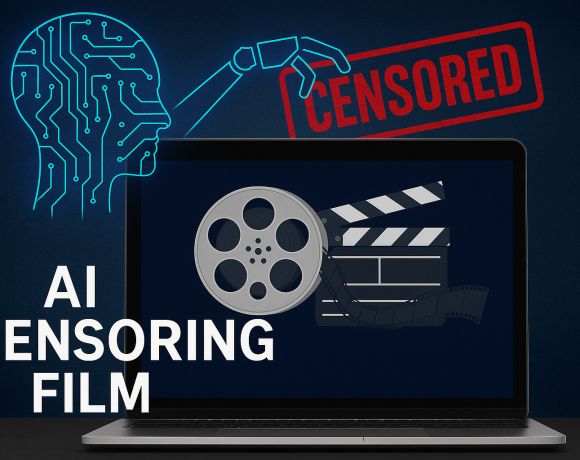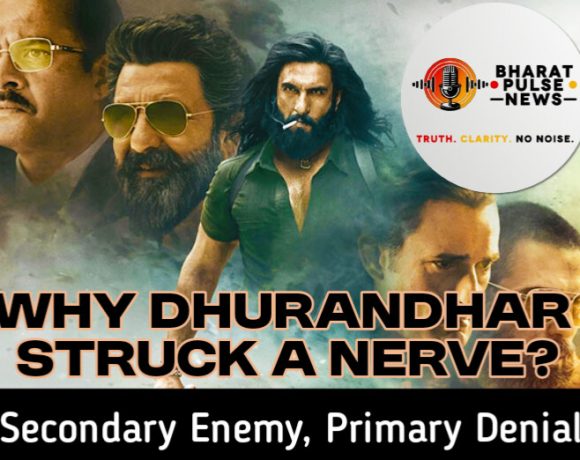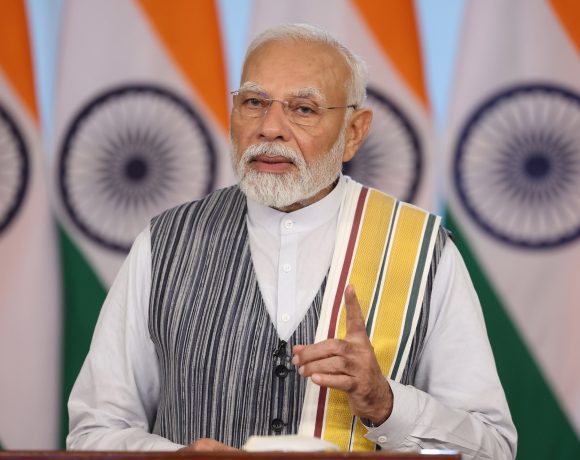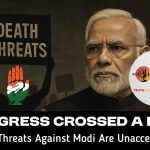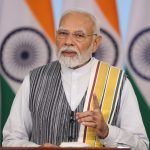
The Vohra Committee Report: A Masterpiece of Political Blackmail?
In the realm of Indian politics, few documents have generated as much intrigue and as little transparency as the Vohra Committee Report. Commissioned in the aftermath of one of India’s darkest security lapses—the 1993 Bombay blasts—the report was expected to expose the deep-rooted nexus between crime, politics, and bureaucracy. Instead, it turned into something far more insidious. It became a tool of strategic silence, a whispered dossier that offered more power in concealment than in revelation. Over the years, attempts to access its full contents have met with bureaucratic obfuscation, missing records, and a national security shield that appears oddly convenient. This op-ed explores whether the Vohra Committee Report, rather than serving justice, became an instrument of political preservation—a textbook example of power without exposure, or as some may see it, a masterpiece of political blackmail.
A Government on the Brink: July 1993
In July 1993, the political climate in New Delhi was as unstable as it was volatile. The Congress government under Prime Minister P.V. Narasimha Rao had come to power in 1991 in the wake of Rajiv Gandhi’s assassination. However, it was a minority government, perpetually balancing itself on the razor’s edge of parliamentary arithmetic. The economic reforms Rao initiated had won international praise but domestically stirred divisions within his party and resistance from opposition benches.
It was in this period of deep political uncertainty that the spectre of the 1993 Bombay serial bombings shook the country. The blasts killed over 250 people and injured more than a thousand, revealing not just a major security breach but an underworld network that allegedly had backing from across the border. Public outrage was intense, and there was growing demand for accountability—not just from law enforcement but also from the political class suspected of collusion with crime syndicates.
Facing a no-confidence motion in Parliament, Rao’s government was tottering. It was precisely at this moment that the Vohra Committee was constituted. Headed by then Home Secretary N.N. Vohra, the committee was tasked with investigating the criminal-politician nexus, ostensibly to clean up the system. But the timing was suspect. A question naturally arises: was this committee truly about justice, or was it designed to deliver Rao the most potent weapon in politics—fear?
The Real Mandate: Crime, or Control?
The Vohra Committee’s official mandate was straightforward: examine and report on the extent of criminalization of politics in India. The informal implications, however, were far more layered. The committee sought and received inputs from the heads of India’s most powerful investigative and intelligence agencies—CBI, IB, RAW, and others. These agencies submitted detailed dossiers that mapped how crime syndicates had flourished across states, often under the patronage of powerful politicians and protected by corrupt bureaucrats and compromised police officers.
But curiously, the committee’s final report, submitted in October 1993, amounted to just eleven pages when it was finally tabled in Parliament—two years later. What happened to the hundreds of pages of detailed annexures? According to the Ministry of Home Affairs, they were classified. Years later, when RTI activists and public interest litigants tried to access the complete report, the government would claim that the meeting minutes and annexures were either lost or too sensitive for disclosure. The most damning material simply vanished.
This selective disclosure raises an uncomfortable but necessary question: was the committee ever meant to lead to action, or was it designed to function as a political pressure valve? A dossier not of accountability, but of quiet leverage? A card up the sleeve of a beleaguered prime minister to negotiate survival in the ruthless power play of Indian politics?
Sharad Pawar and the Maharashtra Underworld Link
To understand the true potential utility of the Vohra Committee Report, one must examine the political dynamics within the Congress party itself. Maharashtra, the epicenter of the 1993 blasts, was ruled by Congress stalwart Sharad Pawar. As Chief Minister, Pawar had overseen the state’s response to the bombings and was seen as a strong contender for national leadership. His stature in the party was formidable, and he often operated with a level of autonomy that made many in Delhi uneasy.
It was also during Pawar’s tenure that the Mumbai underworld had evolved into a transnational criminal empire. Dawood Ibrahim, Iqbal Mirchi, and other notorious figures expanded their influence during this time. While no legal proceedings ever established a direct link between Pawar and these underworld elements, unverified rumors and speculative media reports have long hinted at a degree of political indulgence or at least willful blindness from sections of the state administration.
Could this have been the Vohra Report’s unspoken message? That some of the biggest names in Indian politics were not just tolerating criminal networks, but enabling them? If the annexures indeed contained such explosive material, then Rao’s ability to retain control within his party—especially over a powerful rival like Pawar—becomes easier to understand. The report didn’t have to be public to be effective; it only had to exist.
The No-Confidence Motion and the One Vote That Changed History
On July 28, 1993, Prime Minister P.V. Narasimha Rao faced a no-confidence motion in Parliament. It was a make-or-break moment for his minority government. The numbers were not in his favor, and the opposition was confident of ousting him. But Rao, ever the political tactician, held his cards close.
In the final tally, the government survived—by a single vote.
That razor-thin margin has since become part of Indian political folklore, but what is often overlooked is the role played by abstentions. Among them was Shiv Sena MP Mohan Rawale, whose decision not to vote helped Rao scrape through. This was highly unusual. Shiv Sena was a BJP ally and had no political compulsion to save a Congress government. Yet, it abstained—raising eyebrows and speculation.
Why would Shiv Sena deviate from its ideological partner at such a crucial moment? There was no formal alliance, no visible deal, no political dividend. But there was one invisible hand—the Vohra Committee Report. If the annexures contained material on criminal links in Maharashtra politics, could Shiv Sena’s abstention have been a strategic move to avoid potential fallout? Was the government’s silence on the report’s contents a part of the understanding?
The answer, like the annexures, remains sealed. But the timing is impossible to ignore. The very month the committee was constituted, Rao faced the vote. The very state where underworld linkages were most potent—Maharashtra—also held the keys to internal opposition and unexpected abstentions.
The Power of Omission
The most astonishing part of the Vohra Committee saga is not what was said—but what wasn’t.
Despite being set up under the pretext of national interest and systemic cleansing, the committee’s findings were not acted upon. No prosecutions. No names. No debate. The report was quietly shelved, reduced to a footnote in parliamentary records. When the summary was finally tabled in 1995, it was so sanitized that it offered no specifics, no recommendations, and no actionable content.
Efforts to access the full report have consistently failed. RTI activists like Subhash Agrawal were told that minutes of meetings are “not available.” The Ministry of Home Affairs cited national security in denying file notings. Courts, too, refused to intervene, stating that disclosure of names could jeopardize internal stability.
All of this forms a peculiar pattern. A report prepared at the peak of a political crisis, that may have saved a government, and was then never seen again. It was neither fully buried nor publicly exposed—just kept in a perpetual state of limbo. And therein lies its genius. It did not have to indict anyone to become powerful. Its mere existence was enough to control outcomes, manage alliances, and deflate opposition.
India’s Hoover Files: The J. Edgar Parallel
To truly grasp the political utility of the Vohra Committee Report, one must look across the ocean to America’s infamous architect of fear — J. Edgar Hoover. As the long-serving Director of the FBI, Hoover built a vast archive of secret files on presidents, senators, civil rights leaders, and celebrities. These weren’t just investigative reports. They were leverage. Weapons. Insurance.
Hoover rarely acted on the information he collected. Instead, he used it to remain untouchable, feared, and indispensable for nearly five decades. Every president, from Roosevelt to Nixon, knew that crossing Hoover meant risking exposure of their secrets, personal or political. And so, he endured.
The Vohra Committee Report, particularly its vanished annexures, seems to follow this exact playbook. By all accounts, the report allegedly named senior politicians, bureaucrats, and law enforcement officers complicit in facilitating or protecting criminal syndicates. But rather than initiate institutional cleansing, it was tucked away — just real enough to cast a shadow, but never concrete enough to ignite reform.
This is what makes the report so potent — and so dangerous. Like Hoover’s FBI files, it appears to have served the political elite better in silence than in action. Not to prosecute. But to pressurize, negotiate, and neutralize. An invisible whip hanging in the background of India’s corridors of power.
After Rao: A Conspiracy of Silence
What followed the Rao government only deepened the mystery. Despite change in political regimes, the Vohra Report remained untouched. Neither the BJP-led NDA governments nor the Congress-led UPA ever moved to declassify or act upon it.
Why?
Because the problem wasn’t Rao’s alone. The rot was — and remains — systemic. Every major party has had links, rumors, or scandals tied to organized crime in one form or another, especially at the state level. From land mafias in Uttar Pradesh, mining lobbies in Karnataka, to real estate nexuses in Maharashtra — organized crime and political patronage have gone hand in hand.
The Vohra Committee Report, had it been fully exposed, may have indicted not just individuals but entire political ecosystems. That would mean electoral suicide for multiple parties. And so, even decades later, it sits where power wants it to remain — out of public reach.
The fact that no one — not even reformist politicians, anti-corruption crusaders, or vocal parliamentarians — demanded its release with full force, tells us everything we need to know. The silence is not accidental. It is collective complicity.
What We Lost: From Cleansing to Compromise
The Vohra Committee Report was a rare opportunity. An official window into the grim and growing nexus between crime and politics, offered at a time when the country was reeling from a tragedy. It could have led to systemic reform. It could have been the beginning of accountability, of rebuilding public faith in institutions, of dismantling the covert power of syndicates that operate in the shadows of Indian democracy.
Instead, what we got was silence. A report that led to no action, no convictions, and no reforms. What we lost was not just a document, but a moment. A chance to tell the people of India that the system was finally willing to look in the mirror. That moment was buried — not by political will, but by political survival instincts.
In the years that followed, India saw more scams, more syndicate-politician ties, and more of the same rot the report had hinted at. And each time a scandal broke, we were reminded of that one document — always invoked but never revealed. The Vohra Report became a ghost. Not dead, but haunting.
The Masterpiece That Was Never Framed
Three decades later, the Vohra Committee Report remains one of the most enigmatic instruments of Indian governance. A report that was created under the banner of national interest, but whose fate has been dictated by political convenience. A tool that never punished but possibly protected. That never cleansed, but controlled. And that never exposed, but instead empowered those who knew what lay hidden.
Was it a mechanism for reform? Or was it India’s J. Edgar Hoover moment — a dossier of secrets used not to destroy enemies, but to hold allies in check and preserve the status quo?
This investigative op-ed does not seek to draw final conclusions. It does not allege or insinuate wrongdoing by any specific individual. Rather, it attempts to piece together a pattern — of silence, timing, and strategic suppression — that continues to shape how power operates in India.
If anything, it raises the questions that successive governments have refused to answer: Who was named? Why was nothing done? And most importantly — what happens to a democracy when truth becomes more dangerous than crime?



